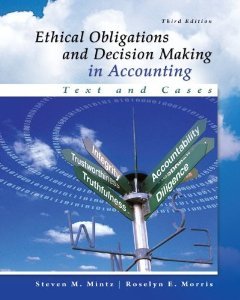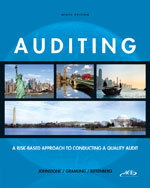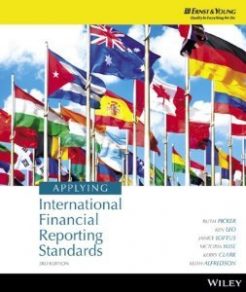Description
Advanced Financial Accounting
Advanced Financial Accounting Christensen Cottrell Baker
Advanced Financial Accounting Christensen Cottrell Baker 10th
Advanced Financial Accounting Christensen Cottrell Baker 10th Solutions Manual
Advanced Financial Accounting Christensen 10th Edition Solutions Manual
***THIS IS NOT THE ACTUAL BOOK. YOU ARE BUYING the Solutions Manual in e-version of the following book***
Name: Advanced Financial Accounting
Author: Christensen Cottrell Baker
Edition: 10th
ISBN-10: 0078025621
Type: Solutions Manual
– The file is either in pdf, doc, rtf or zipped in the package and can easily be read on PCs and Macs.
– Delivery is INSTANT. You can download the files IMMEDIATELY once payment is done.
If you have any questions, please feel free to contact us. Our response is the fastest. All questions will always be answered in 6 hours., most of the time within 30mins
We also faced similar difficulities when we were students, and we understand how you feel.
But now, with the Advanced Financial Accounting 10th Solutions Manual, you will be able to
* Anticipate the type of the questions that will appear in your exam.
* Reduces the hassle and stress of your student life.
* Improve your studying and also get a better grade!
* Get prepared for examination questions.
* Can save you time and help you understand the material.
This is the quality of service we are providing and we hope to be your helper.
Delivery is in the next moment. Solutions Manual is accurate.
Prepare to receive your Advanced Financial Accounting 10th Solutions Manual in the next moment.
ISBN-10: 0078025621
If you have any questions, or would like a receive a sample chapter before your purchase, please contact us at inquiry@testbankcorp.com
Advanced Financial Accounting
Advanced Financial Accounting Christensen Cottrell Baker
Advanced Financial Accounting Christensen Cottrell Baker 10th
Advanced Financial Accounting Christensen Cottrell Baker 10th Solutions Manual
Advanced Financial Accounting Christensen 10th Edition Solutions Manual
CHAPTER 1
INTERCORPORATE ACQUISITIONS AND INVESTMENTS IN OTHER ENTITIES
ANSWERS TO QUESTIONS
Q1-1 Complex organizational structures often result when companies do business in a complex business environment. New subsidiaries or other entities may be formed for purposes such as extending operations into foreign countries, seeking to protect existing assets from risks associated with entry into new product lines, separating activities that fall under regulatory controls, and reducing taxes by separating certain types of operations.
Q1-2 The split-off and spin-off result in the same reduction of reported assets and liabilities. Only the stockholders’ equity accounts of the company are different. The number of shares outstanding remains unchanged in the case of a spin-off and retained earnings or paid-in capital is reduced. Shares of the parent are exchanged for shares of the subsidiary in a split-off, thereby reducing the outstanding shares of the parent company.
Q1-3 The management of Enron appears to have used special-purpose entities to avoid reporting debt on its balance sheet and to create fictional transactions that resulted in reported income. It also transferred bad loans and investments to special-purpose entities to avoid recognizing losses in its income statement.
Q1-4 (a) A statutory merger occurs when one company acquires another company and the assets and liabilities of the acquired company are transferred to the acquiring company; the acquired company is liquidated, and only the acquiring company remains.
(b) A statutory consolidation occurs when a new company is formed to acquire the assets and liabilities of two combining companies. The combining companies dissolve, and the new company is the only surviving entity.
(c) A stock acquisition occurs when one company acquires a majority of the common stock of another company and the acquired company is not liquidated; both companies remain as separate but related corporations.
Q1-5 A noncontrolling interest exists when the acquiring company gains control but does not own all the shares of the acquired company. The non-controlling interest is made up of the shares not owned by the acquiring company.
Q1-6 Goodwill is the excess of the sum of (1) the fair value given by the acquiring company, (2) the fair value of any shares already owned by the parent and (3) the acquisition-date fair value of any noncontrolling interest over the acquisition-date fair value of the net identifiable assets acquired in the business combination.
Q1-7 The level of ownership acquired does not impact the amount of goodwill reported under the acquisition method..
Q1-8 The total difference at the acquisition date between the sum of (1) the fair value given by the acquiring company, (2) the fair value of any shares already owned by the parent and (3) the acquisition-date fair value of any noncontrolling interest and the book value of the net identifiable assets acquired is referred to as the differential.
Q1-9 The purchase of a company is viewed in the same way as any other purchase of assets. The acquired company is owned by the acquiring company only for the portion of the year subsequent to the combination. Therefore, earnings are accrued only from the date of purchase forward.
Q1-10 None of the retained earnings of the subsidiary should be carried forward under the acquisition method. Thus, consolidated retained earnings immediately following an acquisition is limited to the balance reported by the acquiring company.
Q1-11 Additional paid-in capital reported following a business combination is the amount previously reported on the acquiring company’s books plus the excess of the fair value over the par or stated value of any shares issued by the acquiring company in completing the acquisition less any sock issue costs.
Q1-12 When the acquisition method is used, all costs incurred in bringing about the combination are expensed as incurred. None are capitalized. However, costs associated with the issuance of stock are recorded as a reduction of additional paid-in capital.
Q1-13 When the acquiring company issues shares of stock to complete a business combination, the excess of the fair value of the stock issued over its par value is recorded as additional paid-in capital. All costs incurred by the acquiring company in issuing the securities should be treated as a reduction in the additional paid-in capital. Items such as audit fees associated with the registration of the new securities, listing fees, and brokers’ commissions should be treated as reductions of additional paid-in capital when stock is issued.
Q1-14 If the fair value of a reporting unit acquired in a business combination exceeds its carrying amount, the goodwill of that reporting unit is considered unimpaired. On the other hand, if the carrying amount of the reporting unit exceeds its fair value, impairment of goodwill is implied. An impairment must be recognized if the carrying amount of the goodwill assigned to the reporting unit is greater than the implied value of the carrying unit’s goodwill. The implied value of the reporting unit’s goodwill is determined as the excess of the fair value of the reporting unit over the fair value of its net identifiable assets.
Q1-15 When the fair value of the consideration given in a business combination, along with the fair value of any equity interest in the acquiree already held and the fair value of any noncontrolling interest in the acquiree, is less than the fair value of the acquiree’s net identifiable assets, a bargain purchase results.
Q1-16 The acquirer should record the clarification of the acquisition-date fair value of buildings as a reduction to buildings and addition to goodwill.
.
Q1-17 The acquirer must revalue the equity position to its fair value at the acquisition date and recognize a gain. A total of $250,000 ($25 x 10,000 shares) would be recognized in this case assuming that the $65 per share price is the appropriate fair value for all shares (i.e. there is no control premium for the new shares purchased).
SOLUTIONS TO CASES
C1-1 Assignment of Acquisition Costs
MEMO
To: Vice-President of Finance
Troy Company
From: , CPA
Re: Recording Acquisition Costs of Business Combination
Troy Company incurred a variety of costs in acquiring the ownership of Kline Company and transferring the assets and liabilities of Kline to Troy Company. I was asked to review the relevant accounting literature and provide my recommendations as to what was the appropriate treatment of the costs incurred in the acquisition of Kline Company.
Current accounting standards require that acquired companies be valued under ASC 805 at the fair value of the consideration given in the exchange, plus the fair value of any shares of the acquiree already held by the acquirer, plus the fair value of any noncontrolling interest in the acquiree at the combination date [ASC 805]. All other acquisition-related costs directly traceable to an acquisition should be accounted for as expenses in the period incurred [ASC 805]. The costs incurred in issuing common or preferred stock in a business combination are required to be treated as a reduction of the recorded amount of the securities (which would be a reduction to additonal paid-in capital if the stock has a par value or a reduction to common stock for no par stock).
A total of $720,000 was paid in completing the Kline acquisition. The $200,000 finders’ fee and $90,000 legal fees for transferring Kline’s assets and liabilities to Troy should be recorded by Kline as acquisition expense in 20X7. The $60,000 payment for stock registration and audit fees should be recorded as a reduction of paid-in capital recorded when the Troy Company shares are issued to acquire the shares of Kline. The only cost potentially at issue is the $370,000 legal fees resulting from the litigation by the shareholders of Kline. If this cost is considered to be a direct acquisition cost, it should be included in acquisition expense. If, on the other hand, it is considered to be related to the issuance of the shares, it should be debited to paid-in capital.
Primary citation
ASC 805
C1-2 Evaluation of Merger
Page numbers refer to the page in the 3M 2005 10-K report.
a. The CUNO acquisition improved 3M’s product mix by adding a comprehensive line of filtration products for the separation, clarification and purification of fluids and gases (p. 4).
The CUNO acquisition added 5.1 percent to Industrial sales growth (p.13), and was the primary reason for a 1.0 percent increase in total sales in 2005 (p. 15).
b. The acquisition was funded primarily by debt (p.27): The Company generates significant ongoing cash flow. Net debt decreased significantly in 2004, but increased in 2005, primarily related to the $1.36 billion CUNO acquisition.
c. As of December 31, 2005, the CUNO acquisition increased accounts receivable by $88 million (p. 27).
d. At December 31, 2005, the CUNO acquisition increased inventories by $56 million. Currency translation reduced inventories by $89 million year-on-year (p. 27).
C1-3 Business Combinations
It is very difficult to develop a single explanation for any series of events. Merger activity in the United States is impacted by events both within the U.S. economy and those around the world. As a result, there are many potential answers to the questions posed in this case.
a. The most commonly discussed factors associated with the merger activity of the 1990s relate to the increased profitability of businesses. In the past, increases in profitability typically have been associated with increases in sales. The increased profitability of companies in the 1990s, however, more commonly has been associated with decreased costs. Even though sales remained relatively flat, profits increased. Nearly all business entities appear to have gone through one or more downsizing events during the 1990s. Fewer employees now are delivering the same amount of product to customers. Lower inventory levels and reduced investment in production facilities now are needed due to changes in production processes and delivery schedules. Thus, less investment in facilities and fewer employees have resulted in greater profits.
Companies generally have been reluctant to distribute the increased profits to shareholders through dividends. The result has been a number of companies with substantially increased cash reserves. This, in turn, has led management to look about for other investment alternatives, and cash buyouts have become more frequent in this environment.
In addition to high levels of cash on hand providing an incentive for business combinations, easy financing through debt and equity also provided encouragement for acquisitions. Throughout the nineties, interest rates were very low and borrowing was generally easy. With the enormous stock-price gains of the mid-nineties, companies found that they had a very valuable resource in shares of their stock. Thus, stock acquisitions again came into favor.
b. One factor that may have prompted the greater use of stock in business combinations recently is that many of the earlier combinations that had been effected through the use of debt had unraveled. In many cases, the debt burden was so heavy that the combined companies could not meet debt payments. Thus, this approach to financing mergers had somewhat fallen from favor by the mid-nineties. Further, with the spectacular rise in the stock market after 1994, many companies found that their stock was worth much more than previously. Accordingly, fewer shares were needed to acquire other companies.
c. Two of major factors appear to have had a significant influence on the merger movement in the mid-2000s. First, interest rates were very low during that time, and a great amount of unemployed cash was available worldwide. Many business combinations were effected through significant borrowing. Second, private equity funds pooled money from various institutional investors and wealthy individuals and used much of it to acquire companies.
Many of the acquisitions of this time period involved private equity funds or companies that acquired other companies with the goal of making quick changes and selling the companies for a profit. This differed from prior merger periods where acquiring companies were often looking for long-term acquisitions that would result in synergies.
In late 2008, a mortgage crisis spilled over into the credit markets in general, and money for acquisitions became hard to get. This in turn caused many planned or possible mergers to be canceled. In addition, the economy in general faltered toward the end of 2008 and into 2009.
d. Establishing incentives for corporate mergers is a controversial issue. Many people in our society view mergers as not being in the best interests of society because they are seen as lessening competition and often result in many people losing their jobs. On the other hand, many mergers result in companies that are more efficient and can compete better in a global economy; this in turn may result in more jobs and lower prices. Even if corporate mergers are viewed favorably, however, the question arises as to whether the government, and ultimately the taxpayers, should be subsidizing those mergers through tax incentives. Many would argue that the desirability of individual corporate mergers, along with other types of investment opportunities, should be determined on the basis of the merits of the individual situations rather than through tax incentives.
Perhaps the most obvious incentive is to lower capital gains tax rates. Businesses may be more likely to invest in other companies if they can sell their ownership interests when it is convenient and pay lesser tax rates. Another alternative would include exempting certain types of intercorporate income. Favorable tax status might be given to investment in foreign companies through changes in tax treaties. As an alternative, barriers might be raised to discourage foreign investment in United States, thereby increasing the opportunities for domestic firms to acquire ownership of other companies.
e. In an ideal environment, the accounting and reporting for economic events would be accurate and timely and would not influence the economic decisions being reported. Any change in reporting requirements that would increase or decrease management’s ability to “manage” earnings could impact management’s willingness to enter new or risky business fields and affect the level of business combinations. Greater flexibility in determining which subsidiaries are to be consolidated, the way in which intercorporate income is calculated, the elimination of profits on intercompany transfers, or the process used in calculating earnings per share could impact such decisions. The processes used in translating foreign investment into United States dollars also may impact management’s willingness to invest in domestic versus international alternatives.
C1-4 Determination of Goodwill Impairment
MEMO
TO: Chief Accountant
Plush Corporation
From: , CPA
Re: Determining Impairment of Goodwill
Once goodwill is recorded in a business combination, it must be accounted for in accordance with current accounting literature. Goodwill is carried forward at the original amount without amortization, unless it becomes impaired. The amount determined to be goodwill in a business combination must be assigned to the reporting units of the acquiring entity that are expected to benefit from the synergies of the combination. [ ASC 350-20-35-41]
This means the total amount assigned to goodwill may be divided among a number of reporting units. Goodwill assigned to each reporting unit must be tested for impairment annually and between the annual tests in the event circumstances arise that would lead to a possible decrease in the fair value of the reporting unit below its carrying amount [ ASC 350-20-35-30].
As long as the fair value of the reporting unit is greater than its carrying value, goodwill is not considered to be impaired. If the fair value is less than the carrying value, a second test must be performed. An impairment loss must be reported if the carrying amount of reporting unit goodwill exceeds the implied fair value of that goodwill. [ASC 350-20-35-11]
At the date of acquisition, Plush Corporation recognized goodwill of $20,000 ($450,000 – $430,000) and assigned it to a single reporting unit. Even though the fair value of the reporting unit increased to $485,000 at December 31, 20X5, Plush Corporation must test for impairment of goodwill if the carrying value of Plush’s investment in the reporting unit is above that amount. That would be the case if the carrying value is $500,000. In the second test, the fair value of the reporting unit’s net assets, excluding goodwill, is deducted from the fair value of the reporting unit ($485,000) to determine the amount of implied goodwill at that date. If the fair value of the net assets is less than $465,000, the amount of implied goodwill is more than $20,000 and no impairment of goodwill is assumed to have occurred. On the other hand, if the fair value of the net assets is greater than $465,000, the amount of implied goodwill is less than $20,000 and an impairment of goodwill must be recorded.
With the information provided, we do not know if there has been an impairment of the goodwill involved in the purchase of Common Corporation; however, Plush must follow the procedures outlined above in testing for impairment at December 31, 20X5.
Primary citations
ASC 350-20-35-11
ASC 350-20-35-30
ASC 350-20-35-41
C1-5 Risks Associated with Acquisitions
Google discloses on page 21 of its 2006 Form 10-K that it does not have significant experience acquiring companies. It also notes that most acquisitions the company has already completed have been small companies. The specific risk areas identified include:
• The potential need to implement controls, procedures, and policies appropriate for a public company that were not already in place in the acquired company
• Potential difficulties in integrating the accounting, management information, human resources, and other administrative systems.
• The use of management time on acquisitions-related activities that may temporarily divert attention from operating activities
• Potential difficulty in integrating the employees of an acquired company into the Google organization
• Retaining employees who worked for companies that Google acquires
• Anticipated benefits of acquisitions may not materialize.
• Foreign acquisitions may include additional unique risks including potential difficulties arising from differences in cultures and languages, currencies, and from economic, political, and regulatory risks.
C1-6 Numbers Game
a. A company is motivated to keep its stock price high. However, stock price is very sensitive to information about company performance. When the company reports lower earnings than the market anticipated, the stock price often falls significantly. A desire to increase reported earnings to meet the expectations of Wall Street may provide a company with incentives to manipulate earnings to achieve this goal.
b. Levitt discusses 5 specific techniques: (1) “big bath” restructuring charges, (2) creative acquisition accounting, (3) “cookie jar reserves,” (4) improper application of the materiality principal, and (5) improper recognition of revenue. Following Levitt’s speech, the FASB subsequently dealt with each of these issues. Accounting standards since that time have limited these earnings management techniques.
c. Levitt notes meaningful disclosure to investors about company performance is necessary for investors to trust and feel confident in the information they are using to make investing decisions. Levitt believes this trust is the bedrock of our financial markets and is required for the efficient functioning of U.S. capital markets.







Reviews
There are no reviews yet.